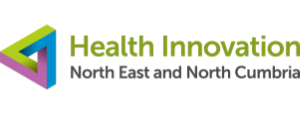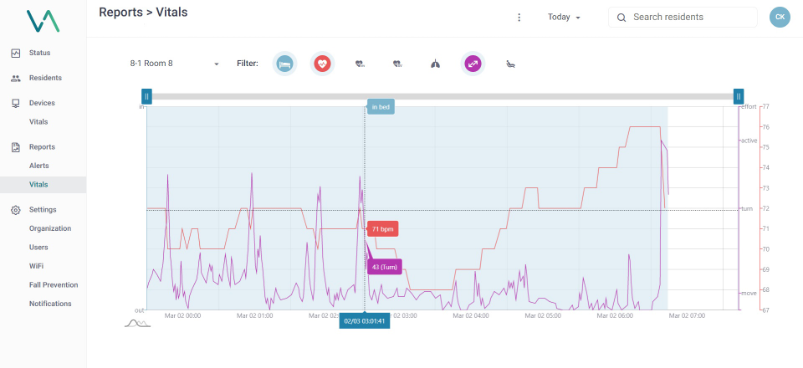Vitalerter Installation: A Real World Evaluation
The Academic Health Science Network for the North East and North Cumbria (AHSN NENC) undertook a real-world evaluation (RWE) on the Vitalerter innovation which claims to reduce falls and manual turn checks. The RWE aimed to establish Vitalerter’s effectiveness in these areas. For this project, utilising funding provided by the Department of Health and Social Care (Digitising Social Care), the AHSN NENC worked together with a North East care home provider and a dedicated project team which included Porters Care (supplier of the Vitalerter solution), Durham County Council and the University of Sunderland. The aims of the independent Real World Evaluation (RWE) were:
- How effective is the Vitalerter solution in preventing falls?
- How effective is the Vitalerter solution in reducing turn checks for residents?
- What are the key (known/unknown) qualitative and quantitative benefits (cashable/non-cashable) that will apply to care homes, care home staff, supporting clinical services/staff and the care home residents themselves?
- Is the solution viable to rollout out on a larger scale across area and the wider NENC region?

Challenge/Problem Identified
Falls can have a huge impact on the lives of care home residents, their family and friends and those individuals and services that provide their care. In England, the population of those aged 65 years and older experience approximately 255, 000, falls-related hospital admissions annually (PHE, 2017).
In care homes falls can lead to a person becoming more dependent (due to injury, reluctance to mobilise etc) along with an increased workload for the staff to maintain the necessary levels of care. Pressure ulcers are also prevalent in care homes, which results in the need for a turn protocol to be put in place which involves waking the resident several times in the night to manually turn them.
By deploying the Vitalerter solution and its alert functionality it is expected to realise benefits associated with a reduction in falls and reduction of manual turns necessary for pressure ulcer management.
Action Taken
“It has reduced falls, reduced injuries, and hospital admissions”
Findings: Qualitive & Quantitive Benefits
Reduction in Falls – 53%
- Reduce time consuming falls-related paperwork.
- Reduction in one-to-one support when a resident falls and requires support and medical attention.
- A more even distribution of care worker time among residents who were/were not categorised as fall risks.
- Improvements in the provision of person-centred practice.
Reduction in manual turns – 33%
- Greater comfort and quality of sleep for residents in the future.
- A greater distribution of staff time
- Less physical strain of staff members
General
Staff reported improvements in wellbeing and decreased work-related stress, indicating the potential for reduced staff sickness.
Confirm Air Mattress requirement
Ability to turn independently
Confirm 121 Care
Ability to get out of bed independently
Alert no bed return
Even if no fall risk from bed, alert if not returned to bed after a set period
Monitor bed presence
View time spent in and out of bed, #endpjparalysis (Up dressed and moving)
Improve sleep Quality
Alerts if mattress has been kicked out of bed , legs over side of bed, reduce nighttime checks

Vitals Chart enables Care staff to review residents’ vitals signs (heart rate, respiration rate, when a resident has turned and bed presence.
